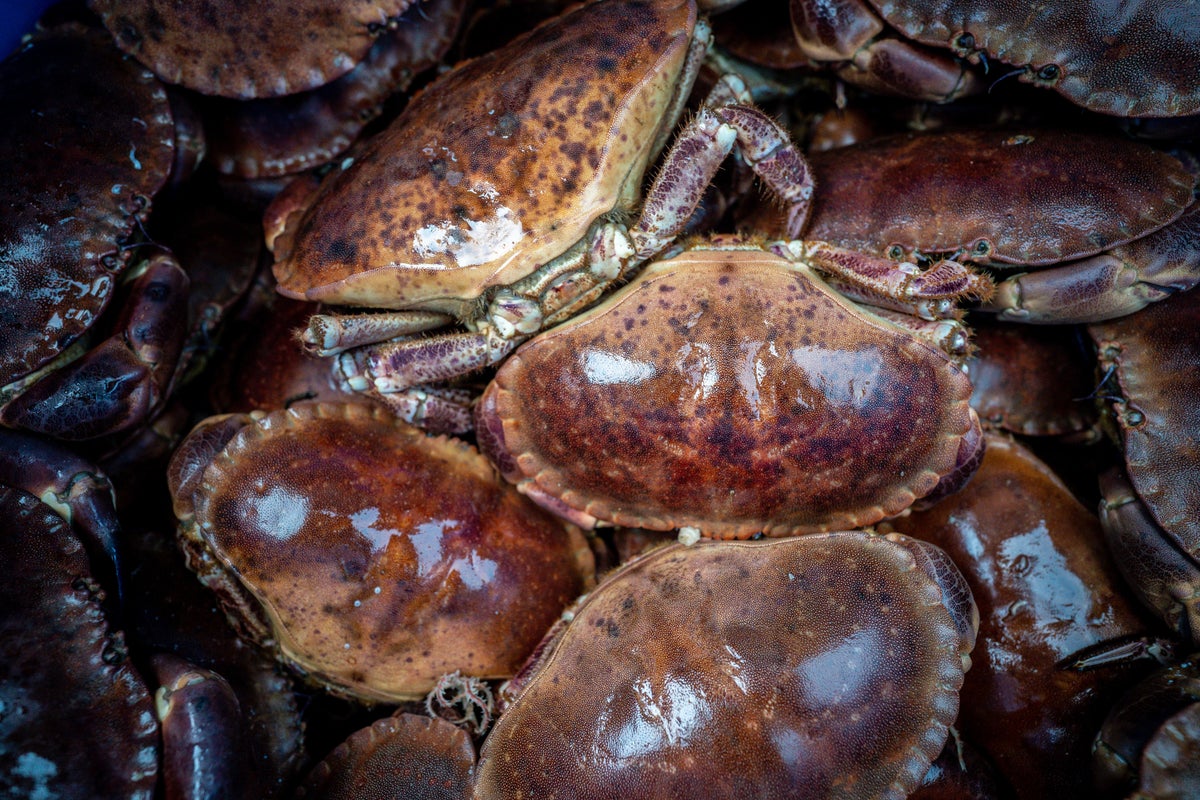
Labour has accused the environment secretary of pursuing a “discredited theory” for a big crustacean die-off in the North East.
Shadow environment secretary Jim McMahon has written to his opposite number in government, Therese Coffey, to criticise her department’s theory that algal bloom caused the deaths.
Thousands of dead and dying crustaceans washed ashore along parts of the north-east coast of England between October and December 2021.
On 17 January, a panel of independent experts convened by the Department for Environment Food and Rural Affairs (Defra) chief scientific officer Gideon Henderson concluded: “A novel pathogen is considered the most likely cause of mortality.”
However, the panel was “unable to identify a clear and convincing single cause for the unusual crustacean mortality”.
Its key observations were: “Mortality over a sustained period and along at least 70km of coastline; the unusual twitching observed by dying crabs in many locations; the dominant mortality of crustaceans rather than a wider range of species.”
Fishers have reported up to a 95% drop in their catches because of the crustacean die-offs and continue to report high levels of dead shellfish in their catches— Jim McMahon
The report added: “The impact of an algal bloom would also explain the wide distribution of observed deaths and cannot be ruled out as a causative factor particularly early in the incident.
“It is unlikely, however, that an agal bloom can explain the twitching nor the long duration of mortality particularly during winter months.”
Mr McMahon has claimed their report contradicts “the algal bloom theory championed by many Conservative MPs in the region, the Conservative Tees Valley Mayor (Ben Houchen) and by your department (Defra) in the initial report it undertook”.
In his letter, Mr McMahon states: “Fishers have reported up to a 95% drop in their catches because of the crustacean die-offs and continue to report high levels of dead shellfish in their catches.
“This algal bloom theory was pursued despite warnings from the local fishing industry and by university marine experts.
“That Defra, in its initial report, could come to such a conclusion regarding algal bloom, that is clearly not shared by this independent panel, is extremely concerning.
“Were there other non-scientific or political motivations that led to the production and reliance on this discredited theory?
“Because the championing of this theory was a dreadful distraction and waste of valuable time.
“This, in addition to the initial delayed government response in investigating, means that 15 months into this issue all that Defra ministers can tell us is that: they don’t know what has caused the die-offs and that there may or may not be an unidentified pathogen causing the die-offs.”
Prior to the independent panel investigating, Defra coordinated a multi-agency probe into the cause of the crustacean deaths but this found no single, consistent causative factor, a Defra source said.
They said: “They could find no evidence of known pathogens and they concluded that a harmful algal bloom present in the area coincident with the event was identified as of significance.”
A Defra spokesperson added: “An independent panel of experts from 10 leading marine science organisations has published a detailed report, concluding a novel pathogen may have caused the crustacean mortality in the North East from October 2021.
“Whilst no further analysis is planned, the extensive analytical work that has already been undertaken means we can further improve our response to any future incident, and the Environment Agency and government scientists at Cefas stand ready to respond.”







